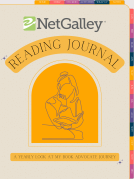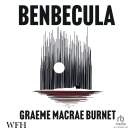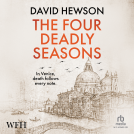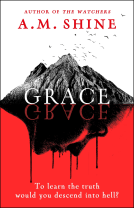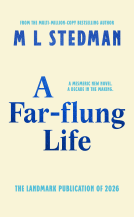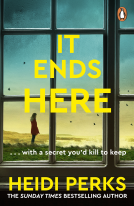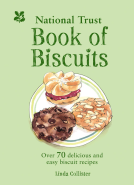
With the End in Mind
Dying, Death and Wisdom in an Age of Denial
by Kathryn Mannix
This title was previously available on NetGalley and is now archived.
Send NetGalley books directly to your Kindle or Kindle app
1
To read on a Kindle or Kindle app, please add kindle@netgalley.com as an approved email address to receive files in your Amazon account. Click here for step-by-step instructions.
2
Also find your Kindle email address within your Amazon account, and enter it here.
Pub Date 28 Dec 2017 | Archive Date 1 Apr 2018
HarperCollins UK, 4th Estate | William Collins
Description
In this unprecedented book, palliative medicine pioneer Dr Kathryn Mannix explores the biggest taboo in our society and the only certainty we all share: death.
Told through a series of beautifully crafted stories taken from nearly four decades of clinical practice, her book answers the most intimate questions about the process of dying with touching honesty and humanity. She makes a compelling case for the therapeutic power of approaching death not with trepidation but with openness, clarity and understanding.
With the End in Mind is a book for us all: the grieving and bereaved, ill and healthy. Open these pages and you will find stories about people who are like you, and like people you know and love. You will meet Holly, who danced her last day away; Eric, the retired head teacher who, even with Motor Neurone Disease, gets things done; loving, tender-hearted Nelly and Joe, each living a lonely lie to save their beloved from distress; and Sylvie, 19, dying of leukaemia, sewing a cushion for her mum to hug by the fire after she has died.
These are just four of the book’s thirty-odd stories of normal humans, dying normal human deaths. They show how the dying embrace living not because they are unusual or brave, but because that’s what humans do. By turns touching, tragic, at times funny and always wise, they offer us illumination, models for action, and hope. Read this book and you’ll be better prepared for life as well as death.
Available Editions
| EDITION | Ebook |
| ISBN | 9780008210892 |
| PRICE | £5.99 (GBP) |
| PAGES | 216 |
Average rating from 25 members
Featured Reviews
 Reviewer 386665
Reviewer 386665
This book is amazing. The author talks so compassionately about her patients and their struggles to face their deaths, and isn't afraid at all to talk about the practical side of the end of life. You can tell she really cares for every one of her patients and has an enormous amount of skill and empathy. I could have cried so many times while reading this book, and did while in the comfort of my own home! It is very moving and yet a practical and important topic, written beautifully by a very talented woman
 Margaret D, Reviewer
Margaret D, Reviewer
Kathyrn Mannix is not a philosopher who has focused on death and what it means and how to approach it. As a palliative carer her experience has been gained from working on the front line, whether that is in oncology or in other fields for many years. Her wisdom has been honed and perfected, assimilated from colleagues and more importantly from patients and their families. She suggests that the birth process is akin to dying with one difference. When a family anticipate a birth they gather, discuss and support the expectant mother with a team of experts. Not always so with a death which is often surrounded in tears, fear and suffering – or at least that is the common perception. Kathyrn rejects this view; her experience has given her a unique perspective and this she shares with us.
Earlier this year I witnessed my first death. My Mother-in-law aged 87 died in hospital. Yes, there were tears but I must attest that her death was as Kathryn has described in this book. As I stroked her head and spoke to her of her family who were waiting for her, telling her she was loved, she seemed to relax and just fall asleep; no struggle; no fear. Yes, we were sad but also relieved for her. Everybody always says that the staff was wonderful and I would echo that. What I witnessed were quite young women, professional, compassionate who were there to support us and give us as much time as we needed. This support was repeated as we dealt with matters with the bereavement office.
How I wished I had read this book before her death. She was brave, we found little notes advising what music she would like. Yes, we had discussed matters very loosely before but she was obviously aware of approaching death – whilst we were not. She was tired; she was struggling; she had accepted and welcomed death.
So with this in mind, I was interested to read this book; a sequence of stories to illustrate Kathyrn’s views. At times, incredibly sad but also so uplifting. In reality it could be hailed as a return to old wisdom; a time when the family would surround the dying, accepting the encroaching death ready to prepare the body and to revisit stories of their life and mourn and take strength from each other. Most of all though, I think the real message, is ‘communicate’.
I found this book to be a great comfort not just because it does not necessarily mean there will be pain and suffering but because now I am aware that there are teams of qualified, caring staff who will access my doubts and fears and let me find my way to a better understanding. Thank you Kathyrn for this book and for leaving me with the image of you, a gentle health professional sitting on the floor by your patient rather than looming over them as the expert.
Thank you to the publishers and NetGalley for providing an ARC via my Kindle in return for an honest review.
 Tracey M, Bookseller
Tracey M, Bookseller
This is a hugely important book that covers new ground.
For most people death is the final taboo. Mannix sketches in the historical background in which (in Western Society) death has been shunted off from the community in which it was once part of the process of living and dying. Now death usually takes place in a medical setting and often our only observation of it is seeing a passing funeral cortege. Death has become caught up in euphemism "she passed away" he "lost" his partner. etc.
There have been more books about bereavement lately (The Grief Handbook by Jeff Brazier, Grief Demystified by Caroline Lloyd , Grief Works by Julia Samuel ) as well as important books by Cathy Retzenbrink, Atul Gawande and Paul Kalanithi etc.
However this book comes from a very "practical" angle from the direct experience of a Doctor of Palliative Medicine. Part of the narrative is how Mannix develops as a professional. How through time she is able to cope with new and difficult situations .
Mannix uses case studies to illuminate general points in her Pause for Thought sections at the end of each segment of the book. There is also useful Resources section of the book.
The case studies vary from Holly who uses her last spurt of energy before she dies to dance, to the long married Nelly and Joe both trying to protect each other from the truth. There are cases from different faiths and classes of society bearing witness to the fact of death as the great leveller.
On a personal level I have not sat with someone as they died so the detailed explanation of the patterns of breathing etc was really informative.
Most of all as someone with a terminally ill close relative, I have found the explanations of the dying process to be really helpful. This book has become a sort of "handbook" for me
I work as a grief counsellor so have heard many accounts of dying but from a post death perspective. so it is invaluable as a "professional" too.
Mannix's compassion shines throughout the whole book. We would all hope that when we die that there is someone like her or the other amazing nurses and doctors she mentions around.
A hugely important book for all us mortals to read as well as those grieving, those with dying family/friends as well as professionals.
This is a book that gives hope rather than despair.
 Nigel R, Reviewer
Nigel R, Reviewer
This is the story of some of Dr Kathryn Mannix's patients. She has written this because, as a palliative care specialist of 30 years, she has seen a lot of people dying. She is also aware of the lack of information about the process that is available to patients and their families. This attempts to redress the imbalance. As a by product of this we get to learn quite a bit about the author and her career too.
I have read a few books on the subject of dying over the past few years. They have all been of interest and informed me to some degree whether they illustrate personal stories or look at the bigger picture. The "personal stories" approach ones that I've read so far were those of one person's story. This book contains a lot of personal stories, all different in the same way that we are all different people. One commonality is the misunderstanding of the stages and process of death. The book has a very good introduction to the subject as a whole. There is also a "health warning" on medicines and this book that sets the tone very well.
Very early on in the book I realised why palliative care might suit Kathryn Mannix. Concern, empathy and interest are very evident. The writing seems to reflect what I imagine her personality to be - skilled, caring and empathetic. It is also highly readable. The names of her patients have been changed and there is nothing that will give away exactly who is being referred to.
If there are not signs of dampness around the eyes when reading this book I'd be frankly amazed. My eyes were frequently damp and some of the stories had tears rolling down my cheeks. I must emphasise that this was not in a bad way. This book may well not be for everyone however it tackles very difficult subjects with great gentleness. The people in these stories are remarkable people.
The book starts with Sabine's story and looks particularly at the process of dying and the need for honesty at such a time. I'll not go through the individual stories - Kathryn writes far better than I do. No two people reading them will react in the same way I imagine however I enjoyed (if I can say that about tales of death) them all and some were very special indeed. What I should say is that some are hard stories and "shocking to read" - you have been warned . However the writing is frequently poetic and has a gentle directness that for me made it an excellent read. The phrase a "survival guide to dying ' seems apt and is coupled with a gentle caring honesty.
I did find some stories ambush you - for me Mark's was one of those. It suddenly hit me quite hard. However this book is so well written that it can allow you tears - not of sadness but maybe of understanding and empathy as well as tears of laughter. I hadn't expected to laugh out loud reading this but I did. One passage even made me both laugh AND cry - not something I expected.
This book worked on more than one level for me. As well as the stories and the "guide to dying" it is a level a great insight into palliative care and hospices generally; on what they do or hope to do. Due to the issues involved in one story the book also looks briefly at the legalities and ethics involved in dealing with patients who are approaching the end of life. At the end of each batch of stories there is a "pause for thought" section to allow people to consider their own positions. At the end of the book there is a good resources section.
In some ways it was a privilege to be able to read this book. It managed to be both personal & general and profound & trivial however it was almost always powerful and always deeply human and humane. I really would hope that this book would be widely read and not simply by those directly interested from a medical perspective - as the author tells us we will all die one day.
 Lesley N, Reviewer
Lesley N, Reviewer
Although this book is written by a palliative care consultant it is very easy to read for a lay-person. The stories are thought-provoking and the sections between ask interesting questions for the reader to consider. There is a strong bias towards cancer cases since that is one of the specialisms of Dr Mannix and I would have appreciated a bit more variety. This book should be recommended for anyone who has a terminal illness, and for relatives and close friends. There is much here that is life affirming and a key message is "choices". In view of the recent case of a woman who's living will was ignored we should all make sure that we understand what those close to us wish for in their final years / months / days. I for one would not wish to be kept alive with no quality of life.
Some people might find this a difficult book to read but they should persevere as we need to be more open about the whole subject. Recommended.
 Anita W, Reviewer
Anita W, Reviewer
With the End in Mind
Reading about death and dying isn't the type of book I normally read, but it's a situation we all face and I've read a couple of well written newspaper articles by Dr Kathryn Mannix.
What a journey this book proved to be. Sometimes sad, often amusing, every page is filled with honesty, compassion and the most incredible insight into end of life situations. Some endings are difficult, but I was surprised by the relative ease with which many face their final hours, days or weeks. The reason is the extent to which they and those close understand what's likely to happen. Dr Mannix is a rare and gifted individual whose empathy is exceptional. She's able to communicate with people in such a way that they can articulate their fears or concerns and she then enables them to deal with them in the most positive way possible. This is an extraordinary talent and the book should be required reading for most medical professionals. It's not bleak; every story covers a different situation and at the end of each section Dr Mannix guides the reader through various reflections or questions.
It would be a great first step in moving back to managing end of life care more positively, in the same way that birth is managed. There are known and clear stages which all can prepare for, armed with relevant knowledge. This book won't be for everyone; it's a difficult and occasionally challenging read. But I'm so pleased I tackled it and I've learned so much. It's ultimately both rewarding and uplifting and my thanks to the publisher for the privilege of an early review copy via Netgalley.
This was a remarkable book, and one that I needed to read. Although it is primarily about death, it is also very much about life – about living your life to the full, by not fearing death when it ultimately comes: “Immortality seems in many ways an uninviting option. It is the fact that every day counts us down that makes each one such a gift”.
The author, as a palliative care doctor, is very well acquainted with death and dying, in in the book she portrays many different ways in which the processes can take place. She deals with the actual physical changes that take place (decreased energy levels, increased time spent sleeping, altered breathing, unconsciousness, death), and the mental changes that can take place in both the dying person, and in their friends and relatives (denial, fear, confusion, acceptance, planning for the future, legacy, tying up loose ends). The overwhelming picture of the end is one of peace.
In former times, death and dying were part of everybody’s lives, and took place in the home, among the family and friends – old and young. Nowadays, death occurs mainly in hospitals, with doctors and nurses, and maybe a few selected relatives and friends. There is more mystery attached, and a death is often seen as a failure, something that could (should) have been prevented.
The author believes that with these changes, we have lost our understanding of the process of death, and have replaced our acceptance of its inevitability with fear: “Euphemisms like ‘passed’ or ‘lost’ have replaced ‘died’ and ‘dead’. Illness has become a ‘battle’, and sick people, treatments and outcomes are described in metaphors of warfare. … at the end of their life they will be described as having ‘lost their battle’, rather than simply having died”.
The work of the palliative team is to minimise the pain and anguish at the end, focussed: “not on saving life at any cost, but on enabling goodbye”.
I am not afraid of death, but – like many people – have been afraid of a long drawn-out and/or painful dying. This book has allayed a number of my worries. “It’s a truth rarely acknowledged that as we live longer thanks to modern medicine, it is our years of old age that are extended, not our years of youth and vigour”. As I become increasingly disabled, death as an end-point becomes more attractive. I would like to have the option of deciding when to die – but as the book points out – it is never that simple. At what point do you say enough is enough? Things that seemed unacceptable last year, I can now work my way around. What defines a life worth living varies from person to person – and from day to day. In this country, euthanasia is illegal. The book deals with one person from the Netherlands, where the repeated offer of euthanasia became more unbearable than the appalling state of his health: “Ujjal ran away from that certain, controlled dying to live with the hope of uncertainty”.
Death happens to us all. It requires some planning so that when it comes, it goes as smoothly as possible for all concerned. That is not to say, that we should perpetually dwell on our mortality, but that we give our end some thought, and ensure that those nearest and dearest to us are aware of our wishes. For the bereaved “It’s not about ‘getting better’ – bereavement is not an illness, and life for the bereaved will never be the same again. But given time and support, the process itself will enable the bereaved to reach a new balance”.
“Living is precious, and is perhaps best appreciated when we live with the end in mind”.
I highly recommend this book – to everyone.
This book was so insightful and given me a different way of looking at the process of dying. Have recommended it to all the peers on my Counselling course as think the material is invaluable. Given me a lot of food for thought
 Rob S, Book Trade Professional
Rob S, Book Trade Professional
An emotive subject for all, but dealt with in such a way that makes for an unexpectedly life-affirming experience as a reader. Beautifully written, with touches of genuine humour in amongst sadness and pragmatism. I've already recommended this to my friends and family.
 Catherine R, Media/Journalist
Catherine R, Media/Journalist
This may be the most important book I have ever read. I never realised just how much I needed to read a book about the process of death but having experienced a significant amount of loss which caused emotional trauma I feel as though this book will be able to help me understand what I witnessed. I thought what I saw and heard was barbaric and horrific but I am comforted to find out the process was actually a pretty normal and typical death. This is because we, as a society still don't talk about death. I would like to thank the author for taking the time to write up true stories about a variety of experiences of death with candour and even some humour. I want everyone I know to read this book so they can understand just how well you can live life if you understand how the end will be.
 Reviewer 176001
Reviewer 176001
Thank you to Netgalley and the publishers for providing me with a copy of this book in return for an honest review.
I wasn't sure what I was expecting on requesting this book from Netgalley. I am one of those people who has a pretty morbid fascination with death and dying. While my life has until now been untouched by the deaths of close relatives, I- like many others- have pondered and feared how my death and death of my loved ones may come about.
Kathryn Mannix's fabulous book clears up so many misconceptions of death and dying. I was enthralled with her recollections of patients she had encountered through her career as a palliative doctor and her insights, as well as her own personal thoughts and beliefs. I'm not a reader who is easily moved by the written word but Kathryn Mannix managed to 'get' me more than a few times. This unique book was beautiful and poignant, sometimes funny, very bittersweet. It was an emotional rollercoaster which I didn't want to end.
 Jack R, Educator
Jack R, Educator
What a wonderful book. Full of life in the superb landscape surrounding death. This is well overdue in a society that lives it's vicarious life through social media and non human face-to-face contact. We are taken, like a four year old, with trepidation through the doors of the death room where all is calm. Almost everyone is scared of death in one way or another. This book lifts the lid on those mostly private and un-talked about moments in the normally extreme privacy of a persons death. It is so reassuring as to seem to verge on fiction. The CBT aspects were also deeply fascinating. Everyone we meet, all condemned, as are we all, to death, is magically painted in the most vivacious colours. We all know we will be one of those but so many people fear the process so much they never get to the bedrock of what actually happens. This book should be free with every first pension payout. Great stuff.
Readers who liked this book also liked:
Catherine Merridale
General Fiction (Adult), Historical Fiction, Mystery & Thrillers
Linda Collister
Cooking, Food & Wine, Crafts & Hobbies, Home & Garden

